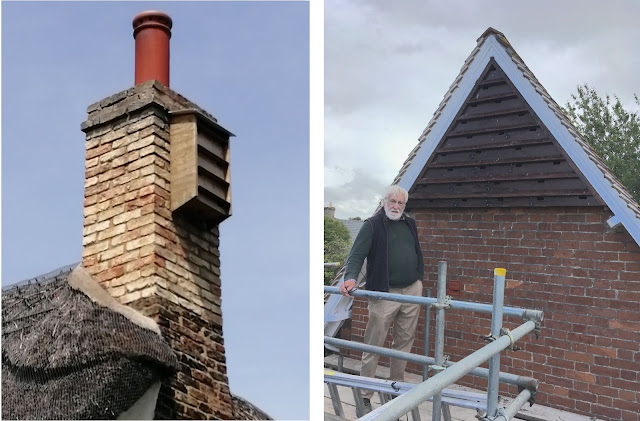The Cambridge System seems to be well-liked by Swifts. Perhaps they like the seclusion afforded by having to travel through a tunnel to reach their nesting place. Wherever there is unused roof-space, an attic affords the opportunity to install internal nest boxes accessed via an entrance in the outer leaf, and a tunnel connecting the entrance to the nest box. It requires less disruption of the existing brickwork than installing a Swift brick. We were sent pictures of another project, where an opportunity was grasped during a renovation of an old building.
Sarah and Dave Richards live on the outskirts of Southport, in a semi-rural location. They fell in love with swifts when hearing their screaming parties during lockdown 2020. They decided to help them by installing Cambridge System internal nest boxes. The Cambridge System was dreamed up by Bill Murrells in 2014. It is essentially the same system as that implemented in the highly successful Fulbourn project.
With the helpful guidance from Tanya and Edmund Hoare of Sedbergh Community Swifts and their builder on board, they created 4 internal nesting spaces and 2 clay cavity liner nest boxes in the gable end of the house.
A calling system will be installed and fingers will be kept crossed.
The pictures below are essentially self explanatory:
Making an entrance piece
Each nest place has an entrance hole crafted from a high density thermalite block that's been cut to brick size. To cut a 29x66mm entrance hole, a 28mm drill bit was used with a file to finish. The entrance hole is slightly larger on the outside before tapering down to 29x66mm.
Installing the boxes
All boxes have a removable plywood back.
The plywood boxes are secured to the inner wall with brackets. Within these boxes, we've installed a false floor with 100mm circular cut out so as to avoid the nesting area being raised. All plywood used is 12mm. We intend to fill the edges of the cut outs so as to make them concave.
Clay cavity liner swift bricks
With limited space in the loft corners, they added two other boxes, based on using a 215x145x200mm clay cavity liner - another Bill Murrells idea. These have the same size entrance hole with a bigger brick surround and no pipe as the box is positioned within the wall, spannng the cavity.

.jpeg)
.jpeg)
.jpeg)
.jpeg)
.jpeg)












